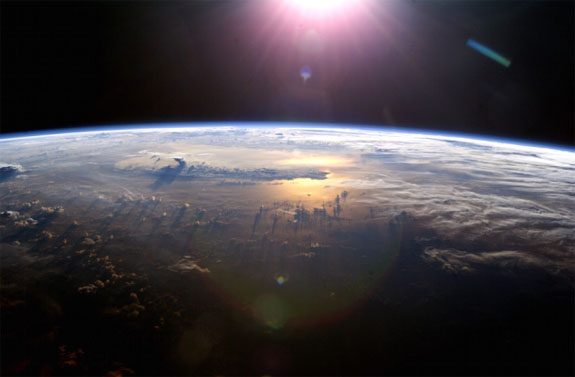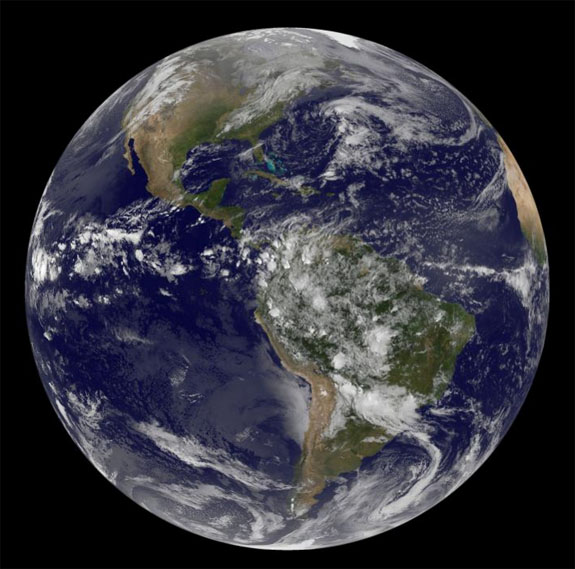October 28th, 2015
Harvard scientists believe that spraying clouds of diamond dust into the atmosphere could be an effective way to cool the planet and counter the effects of climate change. This large-scale manipulation of the earth's climate is called "geoengineering."

The idea is based on climate data collected after Mount Pinatubo erupted in the Philippines in 1991. The 20 million tons of sulfur dioxide that were blasted into the sky by the volcano effectively redirected some of the sun's energy and lowered the average temperatures over the next two years by a half degree.
Unfortunately, mimicking the action of a volcano by pumping sulphates into the sky is considered a potentially dangerous plan. Sulfates lead to the production of sulphuric acid, which depletes the ozone layer, negatively affects plant growth and diminishes the effectiveness of solar panels.
So scientists have been working on a viable alternative.
In a paper published in Atmospheric Chemistry and Physics, the Harvard scientists argued that carbon-based diamond dust or alumina (aluminum oxide) would be far more effective and less damaging than sulphates.

“Our paper is really geared towards removing the mindset that it has to be sulphate that’s used to do solar radiation management,” co-author Debra Weisenstein explained to Nature. "Diamond dust isn’t the only alternative — alumina dust also works — but [diamond] seems to be the best."
Certainly, alumina would be a less costly material, but the scientists believe diamonds would be 50% more effective. The nanometer-sized particles would be made from lab-grown diamonds. The scientists reported that synthetic diamond dust costs about $100 per kilogram and that hundreds of thousands of tons would be required annually to get the desired effect.
Looking into the future, co-author David Keith noted that by 2065 there will be 10 billion people on the planet and the cost might be on the order of $5 per person to pump 450,000 tons of diamond dust into the sky each year.
The peppering of the material would be done by commercial jets, according to the scientists.
The diamond-dust cooling strategy is not without its own risks. First off, it's never been tested, and second, once the diamonds are up in the sky, the results — positive or negative — would be difficult to reverse.
Images: NASA

The idea is based on climate data collected after Mount Pinatubo erupted in the Philippines in 1991. The 20 million tons of sulfur dioxide that were blasted into the sky by the volcano effectively redirected some of the sun's energy and lowered the average temperatures over the next two years by a half degree.
Unfortunately, mimicking the action of a volcano by pumping sulphates into the sky is considered a potentially dangerous plan. Sulfates lead to the production of sulphuric acid, which depletes the ozone layer, negatively affects plant growth and diminishes the effectiveness of solar panels.
So scientists have been working on a viable alternative.
In a paper published in Atmospheric Chemistry and Physics, the Harvard scientists argued that carbon-based diamond dust or alumina (aluminum oxide) would be far more effective and less damaging than sulphates.

“Our paper is really geared towards removing the mindset that it has to be sulphate that’s used to do solar radiation management,” co-author Debra Weisenstein explained to Nature. "Diamond dust isn’t the only alternative — alumina dust also works — but [diamond] seems to be the best."
Certainly, alumina would be a less costly material, but the scientists believe diamonds would be 50% more effective. The nanometer-sized particles would be made from lab-grown diamonds. The scientists reported that synthetic diamond dust costs about $100 per kilogram and that hundreds of thousands of tons would be required annually to get the desired effect.
Looking into the future, co-author David Keith noted that by 2065 there will be 10 billion people on the planet and the cost might be on the order of $5 per person to pump 450,000 tons of diamond dust into the sky each year.
The peppering of the material would be done by commercial jets, according to the scientists.
The diamond-dust cooling strategy is not without its own risks. First off, it's never been tested, and second, once the diamonds are up in the sky, the results — positive or negative — would be difficult to reverse.
Images: NASA


